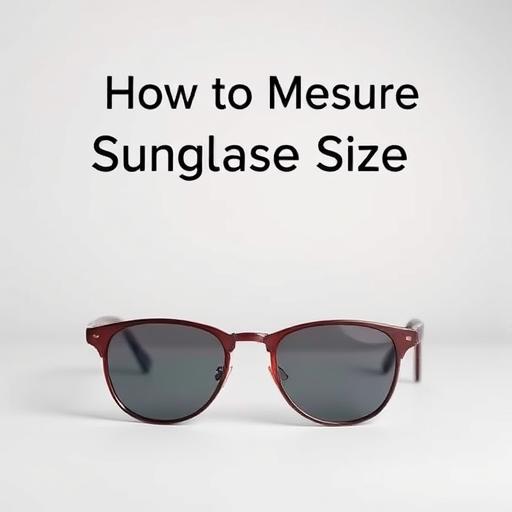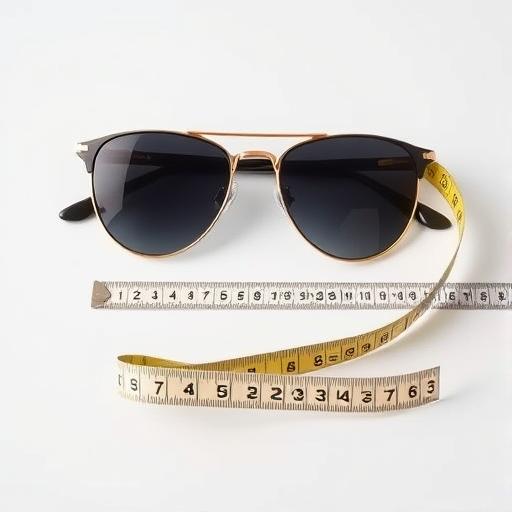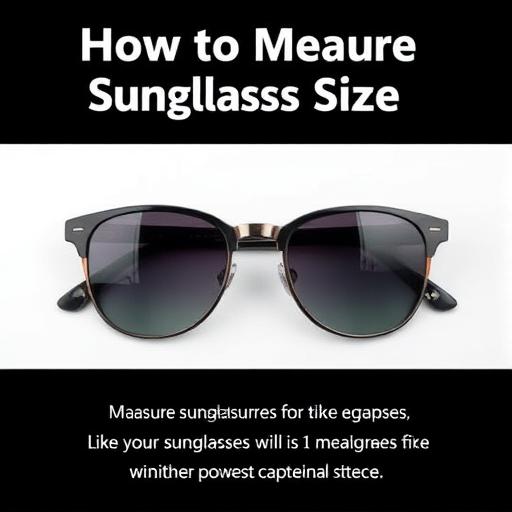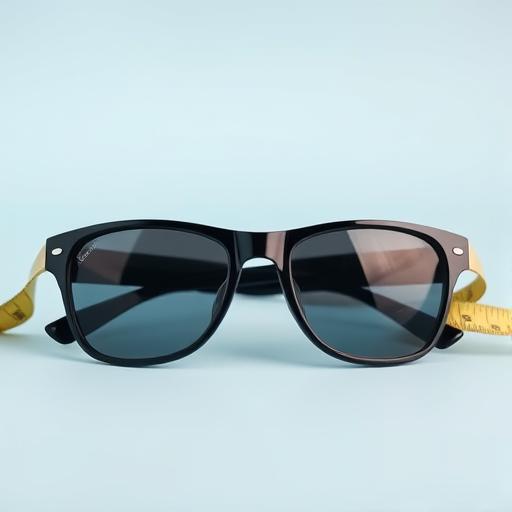How to Measure Sunglasses Size

How to Measure Sunglasses Size for the Perfect Fit

Choosing the right pair of sunglasses isn’t just about style—it’s about comfort and functionality. Whether you’re shopping online, replacing an old pair, or ordering custom shades, knowing how to measure sunglasses size ensures a snug, flattering fit. The key measurements—lens width, bridge width, temple length, and frame height—help you avoid gaps, slippage, or discomfort. Plus, accurate measurements save you from returns and disappointments. In this guide, we’ll break down the process step by step, so you can confidently pick sunglasses that look and feel great.
Understanding Sunglasses Sizing Terminology
Lens Width (LW)
Lens width measures the horizontal distance from one edge of the lens to the other. This is the most critical measurement, as it determines how much of your face the sunglasses cover. Too wide, and they’ll look oversized or slip off; too narrow, and they’ll pinch or leave gaps. Most standard sunglasses range from 48mm to 58mm, while oversized styles can exceed 60mm.
Bridge Width (BW)
The bridge is the space between the two lenses where the frame meets your nose. A well-fitted bridge ensures the sunglasses stay in place without pinching. Bridge width is measured from the innermost edge of one lens to the same point on the other. Adjustable nose pads can compensate for slight variations, but a precise measurement helps avoid discomfort.
Temple Length (TL)
Temple length refers to the distance from the lens hinge to the tip of the temple arm. This measurement affects how the sunglasses sit on your ears or head. Temples that are too short may feel tight, while overly long ones can cause slippage. Most sunglasses have temple lengths between 130mm and 150mm.
Frame Height (FH)
Frame height measures the vertical size of the lens, from the top to the bottom. This is especially important for styles with high or curved lenses, such as aviators or cat-eye frames. A proper frame height ensures the sunglasses align with your face shape without obstructing vision.
Distribution Analysis
Option A (33%)
Option B (33%)
Option C (34%)
Distribution chart for How to Measure Sunglasses Size
Step-by-Step Guide to Measure Sunglasses Size
Measuring Lens Width
- Using a Ruler or Caliper: Place the zero mark of the ruler at the left edge of the lens and measure to the right edge. Ensure the sunglasses are laid flat for accuracy.
- Alternative Method (Printed Template): Print a template with pre-marked measurements and align the sunglasses with it for a quick reference.
Measuring Bridge Width
Measuring Temple Length
Measuring Frame Height (if needed)
For vertical measurements, align the ruler from the top of the lens to the bottom. This is crucial for rectangular or cat-eye shapes where lens height impacts the overall fit.
How to Measure Sunglasses Size Without a Ruler
Use a Credit Card or ID as a Reference
Credit cards are typically 54mm wide. Compare the lens width of your sunglasses to the card for a rough estimate.
Measure with a Smart Device
Use augmented reality (AR) apps or online retailers with virtual try-on tools to visualize how the sunglasses will fit.
Ask a Friend or Professional
Have someone else measure the sunglasses for accuracy, or visit an optician for in-person measurements.

Interpreting Sunglasses Size Labels
Standard Size Format (e.g., 52-19-140)
This three-number format represents lens width (52mm), bridge width (19mm), and temple length (140mm). Smaller faces typically fit sizes like 50-16-130, while larger faces may prefer 58-18-145.
Oversized vs. Standard Sizes
Oversized sunglasses (lens width over 54mm) are trendy but may not suit all face shapes. Balancing style with functionality ensures comfort.
How to Match Sizes to Face Shapes
Common Mistakes to Avoid When Measuring
How to Use Measurements to Choose the Right Fit
Conclusion
Measuring sunglasses size is simple once you know the key dimensions: lens width, bridge width, temple length, and frame height. Whether you’re shopping online or replacing an old pair, accurate measurements ensure a comfortable and stylish fit. Use a ruler, printed template, or smart device to get precise numbers, and always cross-check with retailer size guides. With the right tools and knowledge, you’ll find sunglasses that look and feel perfect.
FAQ Section: How to Measure Sunglasses Size

Can I measure sunglasses size with just a tape measure?
– Yes, but ensure the device is flexible and the frame is flat.
What if the sunglasses I own don’t have size labels?
– Measure the lens width, bridge, and temple manually using a ruler.
How do I know if my sunglasses are too big or too small?
– Overly large sunglasses may slip or leave gaps, while small ones might pinch or distort.
Are sunglass size measurements universal across brands?
– Most brands use standard mm units, but styles and proportions vary.
How do I measure sunglasses size for a child?
– Use a smaller ruler and refer to kids’ size charts (e.g., 38-15-120 for average children’s sizes).
